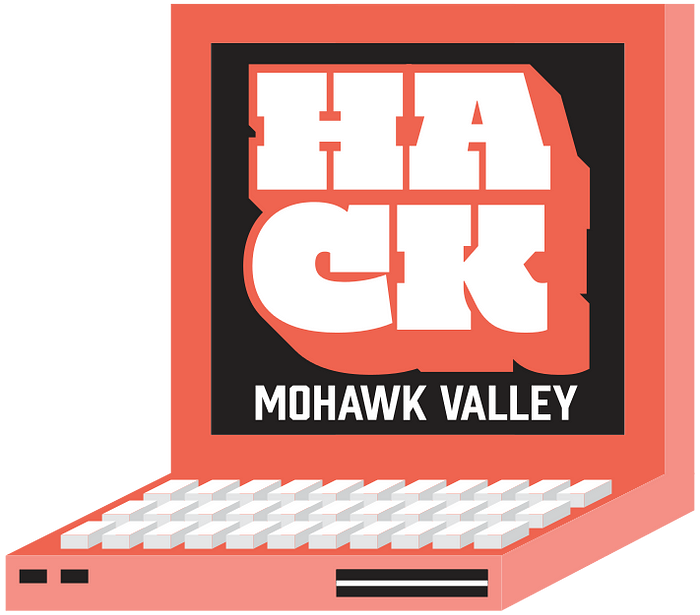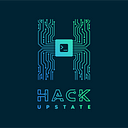Hack Mohawk Valley: The Results Are In
Hack Upstate’s mission is to advance Upstate NY’s technology community.

Sincerest thanks to all involved with Hack Mohawk Valley this past weekend. This was our first chance to collaborate with our friends Ryan Miller and Stacey Smith from MVCC’s thINCubator. We’re super grateful to have had the opportunity. They’re a first-rate team doing incredible things for Utica’s tech and entrepreneurial communities. It was a pleasure to partner with them.
We’re always amazed to see so many talented Upstate, NY technologists come together to build, break, and collaborate at our events. Hack Mohawk Valley was no different.
We started Hack Upstate 5.5 years ago to address two problems:
- Reduce Upstate NY’s talent churn rate. We educate the best and brightest STEM talent in the country. We’re determined to keep them in Upstate, NY.
- Facilitate cross-collaboration between the regional tech communities (e.g., Buffalo, Rochester, Syracuse, Utica, and the Capital Region).
Here we are nearly 6 years later and we’re proud to say we’ve created a network comprised of thousands of Upstate NY technologists and facilitated dozens of job placements.

Hack Mohawk Valley, presented by lead sponsor CoveyCS and hosted at MVCC’s thINCubator, was a tremendous success with over 80 sign-ups and is testament to Upstate, NY’s growing technology community.




Here’s what the teams built:
Grand Prize
The team behind the Grand Prize winning application, LUNArt, took home $500 for their realtime web-based art display, which not only displays “Live Universal Natural Art”, but also shares useful and interesting information about the moon.

The team from SUNY Poly noted that their inspiration stemmed from their desire to introduce new art to campus that is “inviting” and “representative of the ideals of a STEM college” like SUNY Poly. Their realtime LUNArt web-based art display brings together technology, mathematics, app development, and art in a unique and interdisciplinary way. The data they are pulling is coming from a handful of public APIs from government agencies including the Navy and NASA and ultimately used to inform the displays.
To build LUNArt, they used Node.js and an Nginx web server, along with HTML and JavaScript on the front-end.
First Runner-up
The $300 prize for the First Runner-up went to Commingle.

As we all know, it’s extremely easy to get distracted nowadays. Meaningful communication has suffered because our faces are constantly buried in our mobile devices.
To address this problem the team behind Commingle built a tool to help improve our mental well-being through “real” communication.
They built a question-backed web application with the underlying mission to help people learn new things and create new communication threads with friends, families, and partners using questions specifically designed to build connections into our conversations.
The questions they use are grouped together in “Packages”. Users can leverage different types of packages in different contexts with the wide assortment of varied connections that they have. The questions are meant to act as ice breakers which ultimately help open doors to deeper, more meaningful conversations.
To build Commingle the team used Wordpress and the WordPress Page builder, Elementor.
Honorable Mention
The team behind Alucard took home $100 and Honorable Mention for their Halloween-themed web application which provides an easy way for individuals to report psychic vampire sightings. To report sightings to the community sourced database, users can provide either lat and long coordinates or a geocoded address via the app’s online submission form.
The team’s main goal with the project was to “learn something new”. In pursuit they built Alucard using languages and framework they had little to no experience with, including Python and Flask. For the front-end they used Bootstrap and for the heat mapping functionality they used Google Map’s API.

Best Social Good Hack
Along with First Runner-up, the Commingle team took home the Best Social Good Hack for their meaningful communication and connection building application. The judges were impressed with the enormity of the problem they sought out to solve as well as the positive social impact the Commingle application could have on people’s everyday lives.
Best Use of Open Data
The Best Use of Open Data went to the team behind the Move Helper Application. As many of us know, moving to a new city is hard. Without access to relevant community information it can be difficult to make adept decisions when coordinating a move. That’s where the Move Helper Application comes in.

Move Helper presents users with community-specific data based on the addresses they provide. It’s meant to act as a one-stop shop for information-seeking individuals who are moving to new cities.
The Move Helper application is fueled by four open datasets from the City of Syracuse’s DataCuse repository. They include data associated with code violations, lead violations, water main breaks, and weekly crime visualizations. The team used MongoDB and Python to extract the data, store it, transform it and process it. JavaScript was used on the front-end in order to call the data, and present it in a clear and intuitive manner.
With the first ever Hack Mohawk Valley hackathon in the books, we’d be remiss if we didn’t take one last opportunity to thank all of our incredibly generous and supportive sponsors:

We also must again thank our awesome panel of judges. We’re extremely fortunate to have their backing as we collectively work together and continue to advance Upstate NY’s technology community.

If you attended Hack Mohawk Valley, we would seriously appreciate you taking our hacker post event survey. It helps us improve and understand who is coming to our events & should only take you 2–3 minutes. You can also leave a testimonial if you’d like — we’d love to add it to our website!
If you missed the demos — you can check them out on our Facebook live stream, view the opening & closing decks, or read more about the projects on Devpost.
See you at the next event!




